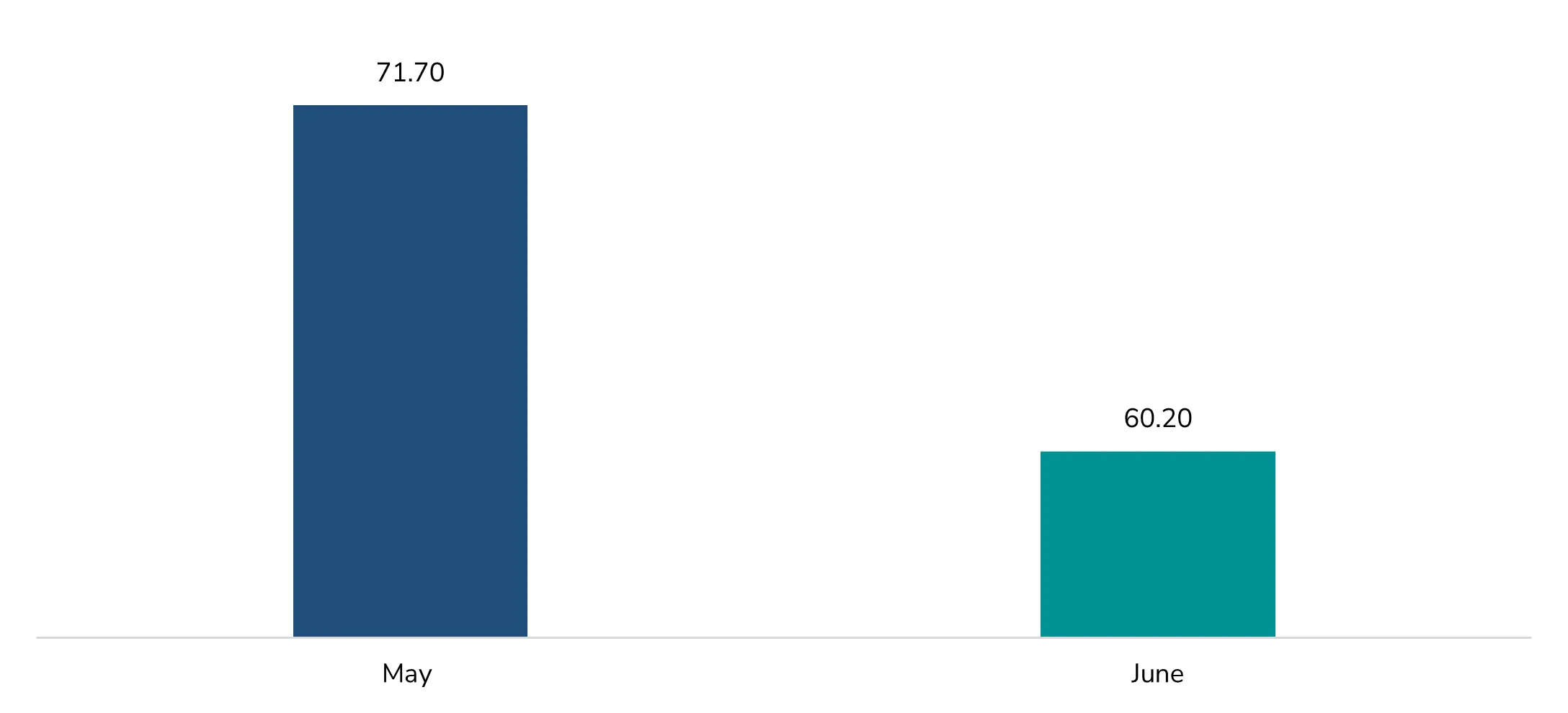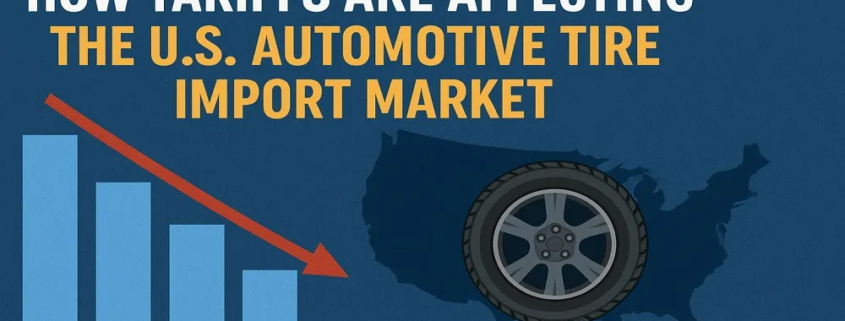How Tariffs Are Affecting the U.S. Automotive Tire Import Market
Introduction To U.S. Automotive Tire Import Market
Tariffs have changed the U.S. automotive tire import market to such an extent that the structure, cost, and sourcing patterns have significantly varied. Over the past several years, the mixture of antidumping (AD) and countervailing duties (CVD) layered on each other, alongside other trade measures like Section 301 tariffs on Chinese goods, had gradually increased the price of imported tires, and at the same time, importers had to change their procurement strategies entirely.
At the beginning, Section 301 tariffs doubled or more. As a result of that, the supply was shifted to Southeast Asian countries such as Thailand, Vietnam, Indonesia, and South Korea. Nevertheless, after the surge of imports from these countries, the U.S. government set up new AD/CVD measures that were mainly aimed at the year 2021, where the biggest affected were passenger and light truck (PVLT) tires from Thailand, Taiwan, South Korea, and Vietnam.
These duties added the costs that the goods had on arrival, and importers had to change their supplier portfolios, repricing contracts as well as seeking new sourcing destinations. After the Chinese tariffs, Thailand, which had been the largest supplier of passenger and commercial truck tires, got hit in 2024 with new antidumping tariffs on truck and bus radial (TBR) tires. The decision caused a shock to the tire distributors, commercial fleet operators, and logistics companies, as freight and transportation fleets are the major consumers of TBR tires, and there are very few domestic alternatives.
The following factors are influencing the U.S. automotive tire import market:
- Importers were forced to move their sourcing to Southeast Asia due to tariffs on Chinese tires.
- The landed cost of PVLT tires from Taiwan, South Korea, Vietnam, and Thailand increased due to antidumping and countervailing duties.
- The biggest source of supply for commercial fleets was disrupted by new tariffs on Thai truck and bus radial (TBR) tires.
- To protect themselves from tariff exposure, importers are diversifying toward countries like Brazil, Mexico, Malaysia, and India.
- Tire prices at wholesale and retail levels are rising across all segments due to higher import costs.
- Although there is less competition for domestic manufacturers, input costs are still rising.
- Fleets and retailers with narrow profit margins are finding it difficult to withstand price increases brought on by tariffs.
- Nearshoring, factory relocation, and mixed-sourcing tactics are reorganizing supply chains.
The Policy Drivers Behind the Shift
- Antidumping and Countervailing Duties (AD/CVD)
The biggest tariff shock effects are to come from the least fair pricing and subsidized production inquiries and enforcement activities. In the year 2021, the U.S. applied both the antidumping and countervailing duties on the passenger and light truck tires (PVLT) that were imported from Thailand, South Korea, Taiwan, and Vietnam. These steps raised the costs of imports and greatly affected the trade routes that had been there for a long time.
At the end of 2024, a new batch of antidumping duties on truck and bus radial (TBR) tires from Thailand was confirmed. Because of the decision that ruled Thailand as the main supplier of TBR tires to the U.S., the announcement caused the commercial fleets and logistics industries to be affected a lot.
- Section 301 Tariffs on China
Historically, import tariffs on Chinese tire products implemented under Section 301 trade actions still exert their impact on the choices of the sources of supply. Since 2018, the shipments from China have gone down drastically due to some tariffs that reached as high as 25 percent. The trade that was diverted to other countries not only raised businesses’ interest in those regions but also triggered increased monitoring and compliance activities by the authorities in the countries considered as alternative suppliers.
The goods and services deficit in June was $60.2 billion, down $11.5 billion from the revised $71.7 billion in May, according to a report released by the U.S. Census Bureau and the U.S. Bureau of Economic Analysis.
Goods and Services Deficit in the USA, 2025

Source: U.S. Census Bureau and the U.S. Bureau of Economic Analysis
Changing Sources of Imported Tires
- Decline of China as a Primary Exporter
China’s market share in the US tire import market was wiped out by Section 301 tariffs. Imports from nations with reduced or no tariffs consequently started to soar, especially from Southeast Asia.
- Rise of Thailand, Vietnam, and Indonesia
Thailand swiftly rose to the top of the PVLT and TBR tire export rankings to the United States after Chinese imports began to decline. To keep up with the growing demand, South Korea, Vietnam, and Indonesia also increased their production capacities.
Automotive Tire Market Insights
Understand the broader tire supply chain shifts with our report on the Automotive Tire Market, covering production capacities in Asia and diversification trends.
Price Impacts on Businesses and Consumers
- Rising Costs for Importers and Distributors
Tariffs are a direct way to increase the costs of the goods that have been brought into the country. Importers not only have to pay higher duties but also must cover the higher expenses for transportation, changes in production, and meeting the new regulations. Due to the costs, companies are going through the process of diversifying their suppliers, renegotiating their contracts, and changing their stock strategy.
- Domestic Manufacturers: A Mixed Advantage
Tire producers located in the U.S. get advantages from less competition in the lower price because of the higher costs of import. But they still bring in essential materials such as natural rubber, chemicals, textiles, and steel cords. It is possible that the inputs for which the company will face tariffs or increasing freight rates, so the net benefit will be limited.
- Retail and Consumer Pricing Pressures
Tariffs are consumer price changes that are inevitable. The most significant price hikes have been in the most affordable tire segments, which have mainly been Asian imports. The cost of TBR tires for heavy vehicle transportation has also gone up at a higher rate than the rest of the tires because the production of these tires is limited in the country.
Supply Chain Adaptation and Reorganization
- Diversified Manufacturing Strategies
Leading tire manufacturers are taking steps to lessen the effects of tariffs by moving or increasing their production in countries that are not targeted by the tariffs. To secure supply bases that are not affected by tariffs in the long term, enterprises have decided to put money into their factories located in Vietnam, India, and Indonesia.
- Nearshoring and USMCA Benefits
Mexico is turning into an increasingly appealing center for tire manufacturing, and the reason is the excellent trade conditions provided by the U.S.-Mexico-Canada Agreement (USMCA). The shorter shipping times and the absence of tariffs give nearshoring a competitive advantage in the market.
Legal and Regulatory Uncertainty
Tariffs caused by the AD/CVD law go through administrative reviews, where the officials decide whether to change the rates or issue retroactive payments. Consequently, importers face a financial risk as they must follow strict customs documentation and bonding requirements to comply with the law.
Legal conflicts at the World Trade Organization (WTO) and diplomatic protests from the countries that are affected add another level of uncertainty. Though these issues may have an impact on future policy, they hardly ever lead to quick changes.
Moreover, there is a bipartisan consensus in the U.S. to support domestic tire production against cheap imports. The political stability among the parties is minimizing the chances of decreased tariffs soon.
Effects on Market Segments
- Passenger and Light Truck Tires (PVLT)
The 2021 tariffs increased costs on PVLT imports from multiple Asian nations. While imports did not collapse, they became more fragmented, with sourcing spread across a wider range of countries.
- Truck and Bus Radial Tires (TBR)
The latest disturbance has impacted this section the most. The imposition of new tariffs on Thai TBR tires has caused fleets, distributors, and logistics providers to reevaluate their pricing and supply strategies. As commercial trucking is largely dependent on imports, the rise in downstream prices is occurring rapidly.
- Specialty Tires
OTR (Off the Road) and industrial tires are the least targeted products in the tire category; however, they still encounter such cost issues because of overlapping supply chains and tariffs on input materials.
The following companies deliver solutions in the field of U.S. Automotive Tire:
- Bridgestone Americas: Bridgestone Americas, a unit of Bridgestone Corporation, Japan, is the second most prominent tire brand in the USA. The firm makes and sells a comprehensive line of car, light truck, and commercial vehicle tires to retail consumers and OEM (original equipment manufacturer) partners. Bridgestone operates several factories in different locations within the United States and has an overall dealer and distribution network that allows it to serve large quantities with ease. The company, using high-tech innovation, the concept of durability, and fuel-saving tire technology, has become a leading player in several market segments.
- Goodyear Tire & Rubber Company: Goodyear, which has its headquarters in Akron, Ohio, is the most identifiable tire brand in the U.S. The company makes a very wide range of tires for passenger cars, light trucks, commercial trucks, and specialty applications. To maximize the cost and supply flexibility, Goodyear merges domestic production with global sourcing. Its vast dealer network, creative product lineup, and solid OEM partnerships enable it to draw a large variety of the U.S. market, ranging from the economy to the premium segments.
Conclusion
Tariffs have not completely stopped tire imports into the U.S., but they have significantly changed the market. The supply chain that used to be heavily reliant on China has broken up and now spread over the countries of Southeast Asia, Latin America, South America, and even India. Importers are adjusting their tactics, but still, the prices are higher and less predictable.
For producers, distributors, the sales network, and, finally, consumers, tariffs have become pivotal in setting the prices, making the plans, and deciding on the supply in the long run. The influence is still there, and the future flexibility, the breadth of the suppliers, and close monitoring of trade will be the factors that will determine the tire market.
Go from Insight to Action with Our Market Research
You’ve seen the overview. Now, get the detailed data and strategic analysis you need to stay ahead in the automotive sector. Explore our related, in-depth reports.
Each report includes comprehensive data, forecasts, and competitive analysis to empower your business decisions.



